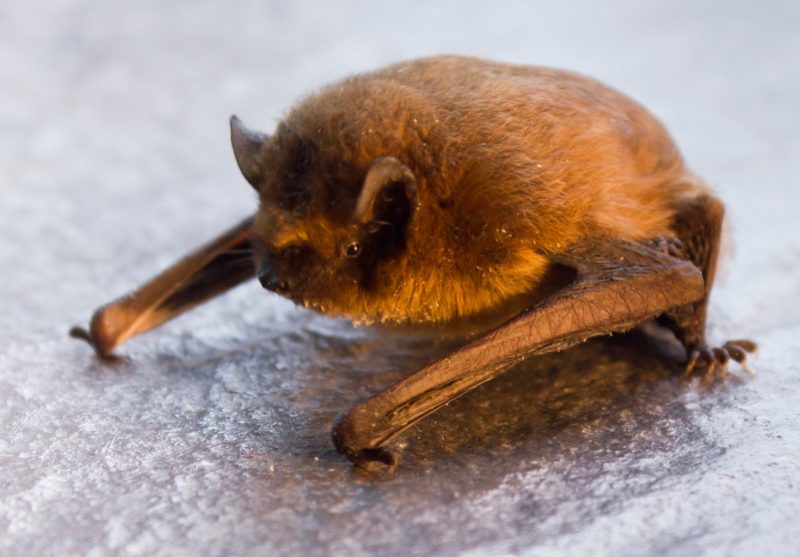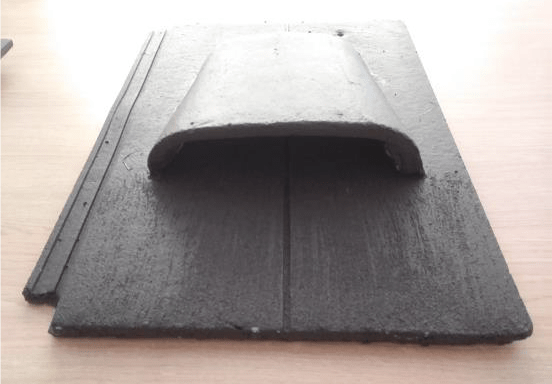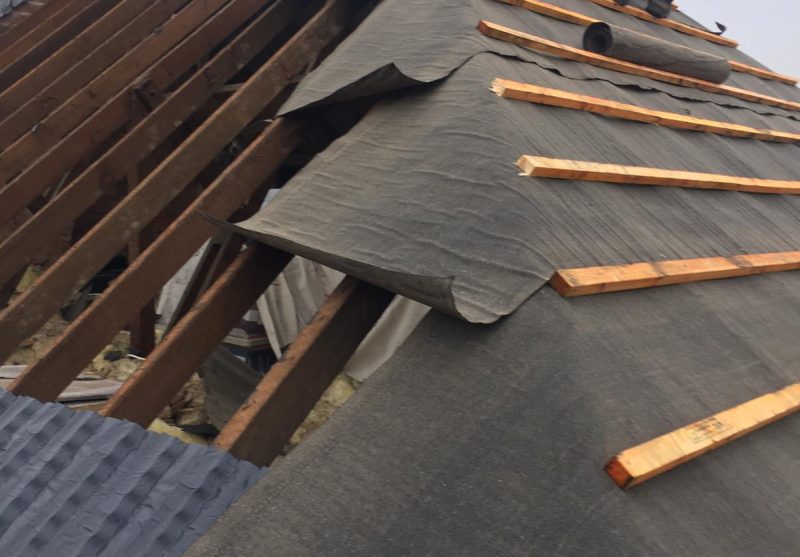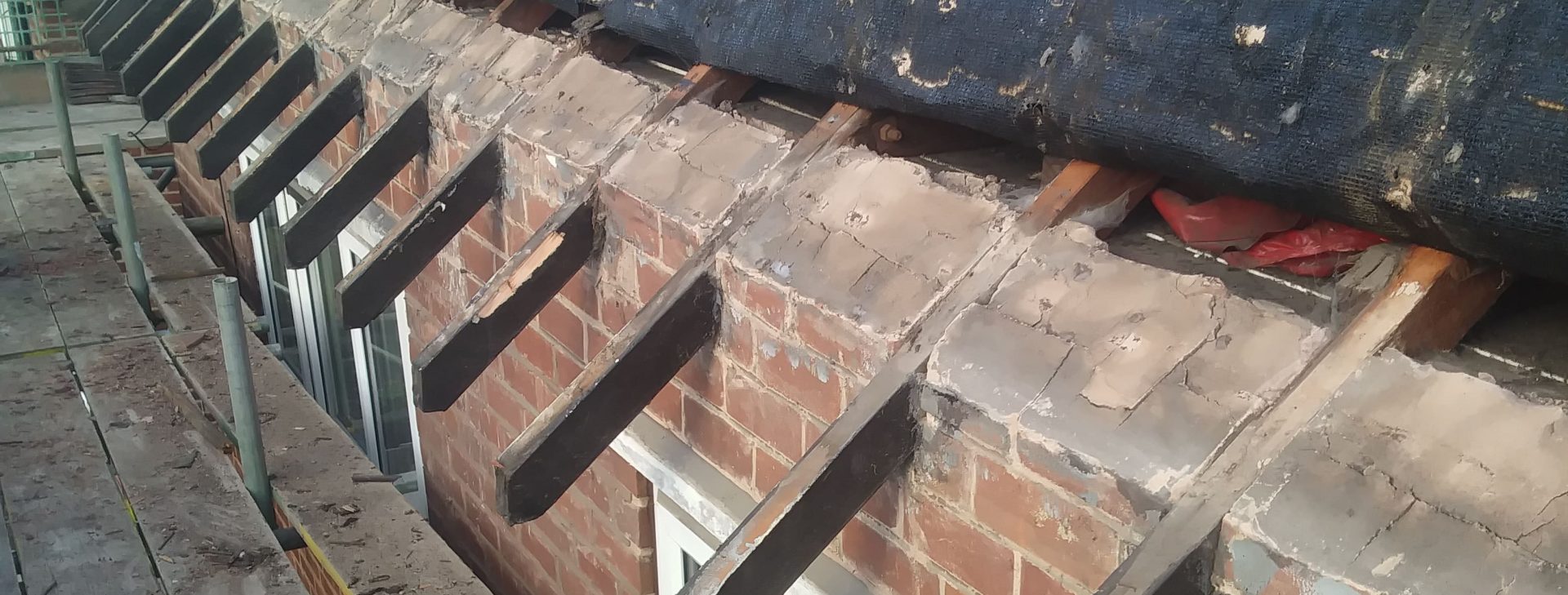-
Project title
Addressing the impact of large-scale reroofing on bats, Sheffield
-
Lead handler + team members
Daniel Best (Associate Director, MCIEEM)
-
Clients
Sheffield City Council
In 2019 Sheffield City Council planned a large-scale reroofing project for more than 5,000 properties over five years.
When such large numbers of properties are proposed for reroofing, it is a near certainty that roosting bats and nesting birds would be present.
The 1950s properties in Sheffield are typically two-storey, brick-built, semi-detached dwellings with pitched and hipped roofs and open eaves and initial inspections identified that the vast majority displayed at least some suitability for roosting bats, such as repeated gaps at the wall plate on the underside of open eaves, and gaps beneath missing or broken roof tiles. The open eaves also provide suitable nesting locations for bird species such as house sparrows, house martins and swifts.

Surveys
For such a large scheme, adopting the ‘standard’ bat survey approach to assess the likely impacts of reroofing would not be feasible or appropriate, so our ecologists developed a bespoke survey methodology during the summers of 2020 and 2021 to inform Years 1 and 2 of the reroofing scheme. The surveys aimed to determine the suitability of the properties to support roosting bats, to gather a high level of nocturnal survey information to determine the prevalence and type of bat roosts present, and determine other bat activity including foraging behaviour.
The survey results were then used to inform an assessment of impacts and mitigation design. The survey methodology included desk studies, Preliminary Bat Roost Assessment (PBRA), Level 1 Nocturnal Surveys, Level 2 Nocturnal Surveys, and Level 3 Nocturnal Surveys. Natural England’s Licensing Policy 4 was considered when developing the survey approach and is particularly relevant for projects of this scale.
Survey Findings
The findings of surveys undertaken for Year 1 and Year 2 were broadly consistent with each other. For example, the Year 2 nocturnal survey effort consisted of 253 surveyor nights. Some level of bat activity was confirmed during the majority of surveys (bat activity was recorded during 96% of surveyor nights at dusk and 79% of surveyor nights at dawn), demonstrating that bat activity is widespread across the housing estates. General bat activity recorded during the surveys typically comprised low or very low levels of foraging activity, averaging 5.9 bat registrations for a given survey.
Bat roosts were identified within approximately 6% of the properties within the scheme and all related to common pipistrelle day roosts, occupied by individual or low numbers of bats. The majority of the identified roosts were accessed at the underside of open eaves, with some roosts accessed beneath missing or broken roof tiles.
Common pipistrelle bats were most frequently recorded (accounting for 95% of all bat registrations) and it was widespread, but generally at low levels. Noctule, soprano pipistrelle and brown long-eared bats made up the remaining 5% of registrations.
The bespoke survey methodology met the survey aims and enabled us to gauge the importance of the survey areas to local bat populations without needing to identify every single roost (it is accepted that some roost locations will be missed). Appropriate mitigation was designed, which is responsive and accounts for roosts not explicitly identified during surveys.

Mitigation and Licensing
Works under the reroofing scheme included the replacement of roof coverings (tiles and underlining), with a new ‘dry’ roof system where new roof tiles are fitted without mortar.
The survey findings demonstrated that bats could roost in any property within the scheme but they certainly don’t roost everywhere. Given the survey findings, and accounting for the limitations of the survey methodology adopted, the following mitigation strategy was devised:
- Retention of all potential bat and bird access points at the underside of the open eaves;
- Roofs to be lined with hessian-backed Type 1F bituminous felt – a bat-friendly lining;
- Installation of bespoke bat access tiles designed by our ecologists in collaboration with Marley on 25% of the roofs;
- Ecological Clerk of Works (ECoW) with all contractors trained in bat-friendly working methods, an ecologist directly supervising the stripping of a proportion of the roofs and the installation of bat mitigation features throughout the lifetime of the project;
- An on-call telephone service employed at all times when the ECoW is not present; and,
- Ensuring the building work is thoughtfully timed to cause the least disruption possible to roosting bats – including avoiding work for some properties which are more suitable for bats during the maternity period of May to September;
These mitigation solutions ensure that the works do not detrimentally affect the conservation status of any bat populations present, addressing the third part of the Licensing Policy 4 requirement. This approach was presented to Natural England and consented under bat mitigation licences granted for Years 1 and 2.
The extended levels of roost mitigation provided, where every property is safe for use by bats in the long-term (as a result of the use of hessian-backed Type 1F bituminous felt), open eaves features being retained, and provision of bat access tiles in all roosts and 25% of the total properties, would not have been achieved if ‘standard’ surveys were completed.
The first monitoring surveys of the mitigation features already installed will be done in 2023. We expect that by retaining the open eaves, local bat populations and nesting birds (including house sparrows and swifts) will benefit, returning to nest in properties only very recently reroofed.

Conclusions
In licensing terms, this is a unique project, where our ecologists had to develop a pragmatic mitigation solution on a large scale that ensured the reroofing could go ahead, while we ensured the safeguarding of individual bats in the short term through sensitive working practices, and populations of bats in the long-term via the use of bat-friendly materials, retention of suitable roosting features on every single property, and installation of additional compensatory bat tiles on a large proportion.
This novel approach required considerable perseverance with Natural England during licensing, but it has resulted in excellent outcomes for bats, under a scheme that is also workable for the roofing contractors. Early engagement with the relevant stakeholders and simplicity in implementation ‘on the ground’ is critical for the successful delivery of mitigation at this scale.
As we continue through the five-year scheme, we are continuously striving to refine the survey methodology and mitigation to deliver the best outcomes for protected species and Sheffield City Council. With the knowledge and site-specific data gained from Years 1 and 2, we will be reducing aspects of the ongoing survey effort, where this doesn’t change the end mitigation result.
This survey methodology and mitigation design could be adopted on large-scale reroofing schemes across the UK, but each scheme should be assessed on its own merits and will require site-specific amendments or adaptations. There is a clear desire (and legal requirement) amongst Local Authorities to appropriately account for the legal protections afforded to bats in reroofing, and this project outlines one of the pathways available.
References
Collins, J. (ed.) (2016). Bat Surveys for Professional Ecologists. Good Practice Guidelines (3rd edn). The Bat Conservation Trust, London.
Simon, M., Hüttenbügel, S. and Smit-Viergutz, J. (2004). Ecology and Conservation of Bats in Villages and Towns. Schriftenreihe für Landshcaftspflege und Naturschutz, Volume 77. Bonn, Germany.

